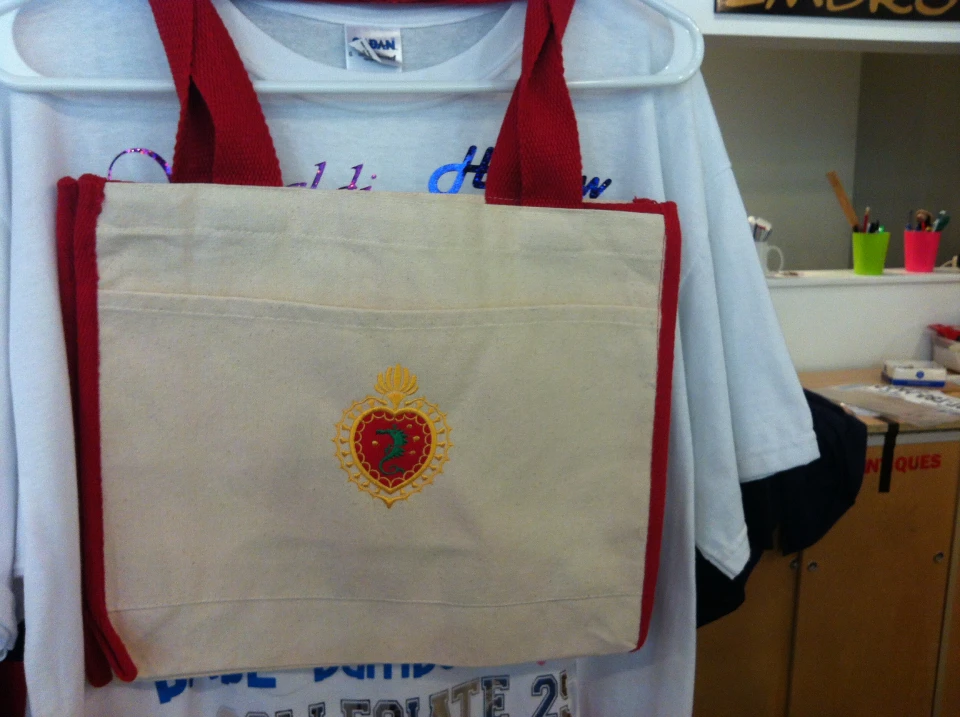Heat Transfer on T-Shirts and Aprons - Custom-made Styles and Logos
Heat Transfer on T-Shirts and Aprons - Custom-made Styles and Logos
Blog Article
The Art of Custom Embroidery: Opening the Tricks to Creating Special and Unforgettable Styles
The tricks to producing personalized embroidery layouts that captivate the eye and leave a lasting impression lie in a fragile balance of strategy, creative thinking, and attention to information. As we delve into the globe of customized needlework, we discover the nuanced interplay in between thread selection, stitch intricacy, and style customization that boosts a mere garment to a work of art.
Choosing the Right Embroidery Threads
When picking embroidery strings, what essential aspects should you think about to guarantee the most effective outcomes for your custom-made designs? The option of embroidery thread is vital in determining the last outcome of your stitched style. Among the primary factors to consider is the material of the thread. Different materials such as cotton, polyester, rayon, and silk use differing degrees of luster, durability, and texture. It is important to pick a thread material that matches the material you are stitching on and lines up with the wanted appearance of the style.
Thicker strings can include measurement and texture to your design, while finer threads are suitable for complex information and little message. Additionally, thinking about the shade fastness and washability of the string is crucial to make sure that your custom-made designs keep their quality and vibrancy over time.
Discovering Different Stitch Strategies
To explore the realm of 'Discovering Various Stitch Methods', one should realize the details and nuances that each stitching approach brings to the art of needlework. Different stitch strategies not just include aesthetic passion yet additionally add to the total appearance and dimension of the design. One prominent stitch method is the satin stitch, which entails very closely stuffed parallel stitches to produce a smooth and shiny surface area, perfect for completing forms and producing strong lays out.
On the various other hand, the backstitch is a versatile strategy typically utilized for detailing and adding great information. It includes stitching backward to produce a solid line of needlework. In addition, the French knot stitch includes a responsive element to layouts, best for producing distinctive accents like flower centers or attractive touches.
Discovering different stitch techniques enables embroiderers to play with light, darkness, and depth within their layouts, raising the aesthetic charm and artistic high quality of their embroidery tasks. By mastering different stitching methods, one can open limitless opportunities for creating special and memorable personalized embroidery items.
Incorporating Personalized Design Components
Having explored the details of various stitch methods such as the satin stitch, backstitch, and French knot, the focus currently shifts in the direction of integrating tailored style components in customized needlework tasks. Customized style components play an important duty in making embroidery projects truly special and memorable. One method to incorporate customization is by including initials, names, or significant dates to the design. This not just adds an individualized touch but also improves the emotional worth of the embroidery item.
An additional means to include personalized visit the website style components is by consisting of signs or motifs that hold special meaning to the recipient or reflect their rate of interests and character. As an example, including a favored blossom, pet, or hobby-related sign can make the needlework design extra meaningful and tailored. Furthermore, choosing shades that resonate with the recipient or align with the designated motif can additionally improve the personalization of the needlework task.
Mastering the Art of Shade Coordination

One key element of shade control is comprehending color theory. This includes understanding just how various shades communicate with each other, the emotions they share, and how they can be incorporated to develop visually enticing designs. By using shade theory concepts, embroiderers can create harmonious color schemes that enhance the general appearance of the style.
Additionally, taking note of comparison is important in color coordination. Utilizing contrasting shades can aid certain elements of the layout pop, enhance clarity, and develop a visually dynamic needlework item. By grasping the art of color sychronisation, embroiderers can boost their designs and develop unforgettable pieces that resonate with clients and viewers alike.
Enhancing Appearance With Advanced Embroidery Stitches
French knots, for example, are excellent for adding tiny, increased dots to your layout, mimicking the look of grains or developing a textured surface area. Bullion knots, on the other hand, can be made use of to develop twisted, ropelike elements that include a luxurious feeling to his comment is here the embroidery. Seed stitching includes tiny, scattered stitches that can load in locations with a polychromatic appearance, while turkey job produces fluffy, dimensional accents evocative animal hair or foliage. Trying out these advanced needlework stitches enables you to push the boundaries of traditional needlework and produce really unique and aesthetically attractive structures in your designs.
Final Thought
Finally, the art of custom needlework involves a mix of choosing the appropriate threads, discovering different stitch techniques, incorporating individualized style elements, grasping shade sychronisation, and boosting appearance with innovative stitches. By recognizing and implementing these crucial Bonuses elements, embroiderers can create special and unforgettable layouts that display their imagination and ability. Needlework fanatics can unlock the secrets to creating beautiful and custom pieces that stick out and leave an enduring perception.
Report this page